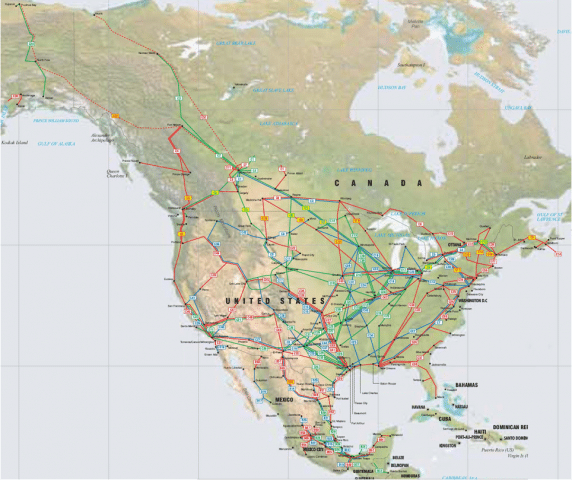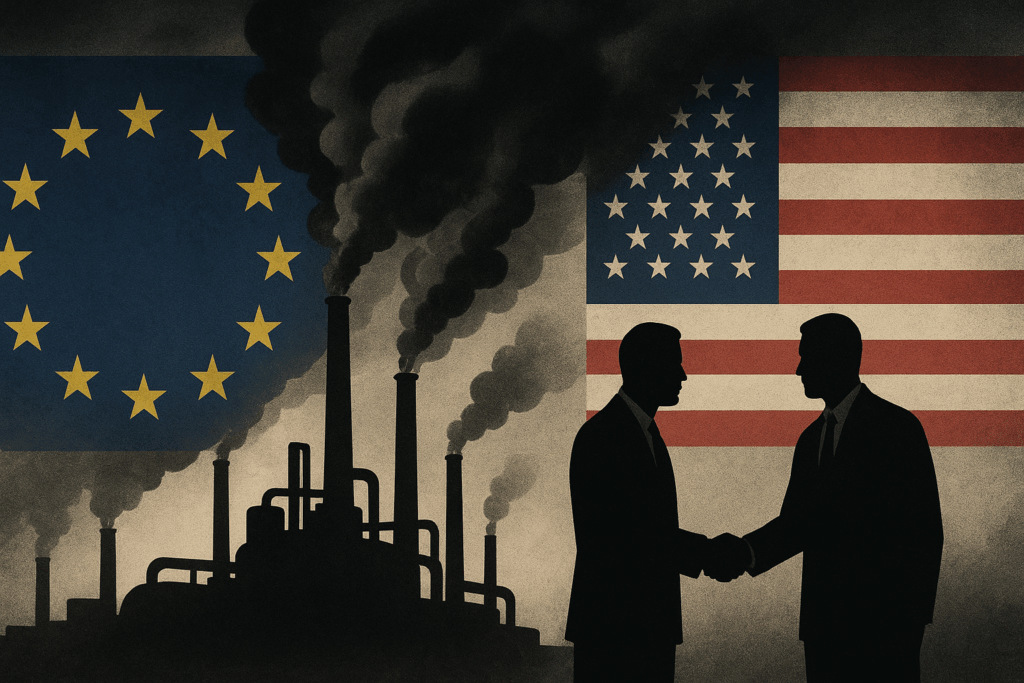Damned if we do, damned if we don’t – this is the CliffsNotes version of the ongoing Keystone XL pipeline debate. President Barack Obama recently halted TransCanada’s proposed Keystone XL tar sands pipeline project, which would bring tar sands crude, or dilluted bitumen (“dilbit”) from Alberta through the heart of the U.S., to Gulf Coast refineries near Port Arthur, Texas, where the oil would then be exported to the global market.
Most environmental organizations declared victory and suggest the Keystone XL pipeline is dead. Unfortunately, this is far from the case. Republican House Majority Leader John Boehner (R-OH) recently told The Hill he may attempt to rope the pipeline into the next payroll tax extension. Furthermore, a recent Congressional Research Services (CRS) paper said that under a little-used Consitutional clause, the two chambers of Congress, rather than the White House, could have the final say on the pipeline’s ultimate destiny. CRS explained,
[I]f Congress chose to assert its authority in the area of border crossing facilities, this would likely be considered within its Constitutionally enumerated authority to regulate foreign commerce.
Because the pipeline crosses the U.S.-Canada border, many thought that the U.S. State Department, and by extension the White House, had the final say in the manner. This may no longer be true.
On the other hand, even if the Keystone XL becomes a “pipe dream,” the grass isn’t necessarily greener on the other side.
Enter TransCanada’s “Bakken Marketlink Project”
Two days after Obama’s Keystone XL announcement, the Oil and Gas Journal discussed another possible TransCanada pipeline proposal involving the Bakken shale formation. Below is an excerpt (emphases mine):
TransCanada Corp. is considering possibilities for moving Bakken shale crude south to the US Gulf Coast via a stand-alone system following the US rejection of the company’s permit application for the Keystone XL crude oil pipeline. TransCanada had originally envisioned moving Bakken crude south as part of Keystone XL, concluding a binding open season for its Bakken MarketLink Project in early 2011.
Options for moving Bakken crude south could include…modification of Bakken MarketLink plans to route Bakken production to the existing Keystone pipeline, already delivering Canadian crude to Cushing, Okla. TransCanada declined to comment on specific possibilities, saying that discussions need to occur with customers and nothing has been finalized.
The Bakken Marketlink Project was originally intended to connect the Alberta tar sands to the Bakken Shale oil and unconventional gas production project, via the Keystone XL Pipeline.
Keystone XL would have carried a dirty trio of oil, unconventional gas, and bitumen to a refinery in Cushing, OK, a current key pitstop for TransCanada’s existing Keystone Pipeline. From Cushing, the oil and gas would travel via pipeline to Port Arthur, TX refineries and export terminals and on to the global market.
In his January 18 statement on the Keystone XL, President Obama indirectly mentioned the Bakken Marketlink project, as well as the idea of extending the existing Keystone pipeline from Cushing to the Gulf, stating,
In the months ahead, we will continue to look for new ways to partner with the oil and gas industry…including the potential development of an oil pipeline from Cushing, Oklahoma to the Gulf of Mexico…and invest in alternatives like biofuels and natural gas.
The Bakken Marketlink would fulfill both the Cushing extension and the fracked natural gas prongs of the Obama statement.
Will Obama’s Pipeline Cancellation Enable Continued Bakken Gas Flaring?
An important January 23 story appearing in the National Journal explained (subscription required),
Most of Washington’s attention to the controversial pipeline has focused on the 700,000 barrels of Canadian oil it would ship daily from Alberta’s carbon-heavy oil sands to refineries in Texas. But almost a quarter of the pipeline’s capacity would have been oil from the recently discovered Bakken shale formation that spans North Dakota and part of Montana. (Snip)
Although it probably wasn’t intentional, Obama’s denial of the Keystone permit has made it more difficult for some U.S. companies to do what his administration and reelection campaign are taking credit for: increasing domestic oil and gas production. It’s an ironic twist, considering that the Bakken oil link likely sweetened the project for the administration initially.
Despite this development, the National Journal‘s Amy Harder noted the Bakken Marketlink Project is still considered a possibility for TransCanada, even without the Keystone XL.
Yet, if the Marketlink Project goes down in flames alongside the Keystone XL, that means, ironically, more flames in the form of gas flaring.
The New York Times, in a key September 2011 investigation, revealed that the oil and gas industry flares roughly 30-percent of the gas fracked from the Bakken Shale.
The Times’ Clifford Krauss wrote,
Every day, more than 100 million cubic feet of natural gas is flared this way — enough energy to heat half a million homes for a day.
The flared gas also spews at least two million tons of carbon dioxide into the atmosphere every year, as much as 384,000 cars or a medium-size coal-fired power plant would emit, alarming some environmentalists.
Why flare?
“I’ll tell you why people flare: It’s cheap,” said Troy Anderson, lead operator of a North Dakota gas-processing plant owned by Whiting Petroleum in The Times article. “Pipelines are expensive: You have to maintain them. You need permits to build them. They are a pain.”
Though cheap, flaring is certainly not good for public health or the environment. Greener grass? Perhaps not.
New Paradigm: No Extreme Energy
The game of pipeline whack-a-mole will continue unabated unless the root of the problem is addressed: prohibiting what Professor Michael Klare calls “energy extremism,” or the extraction of tougher to reach, dirtier fossil fuels. Basically, we’re grasping for leftovers from the original fossil fuel frenzy, and still ignoring the fact that we’re not only running out, we’re also cooking the atmosphere with global warming pollution in the process.
Alas, until we awaken from this delusion, it’s still damned if we do, damned if we don’t.
Some day maybe we’ll pursue a real clean energy future. Until then, it’s “pipe dreams” for the foreseeable future.
Subscribe to our newsletter
Stay up to date with DeSmog news and alerts






